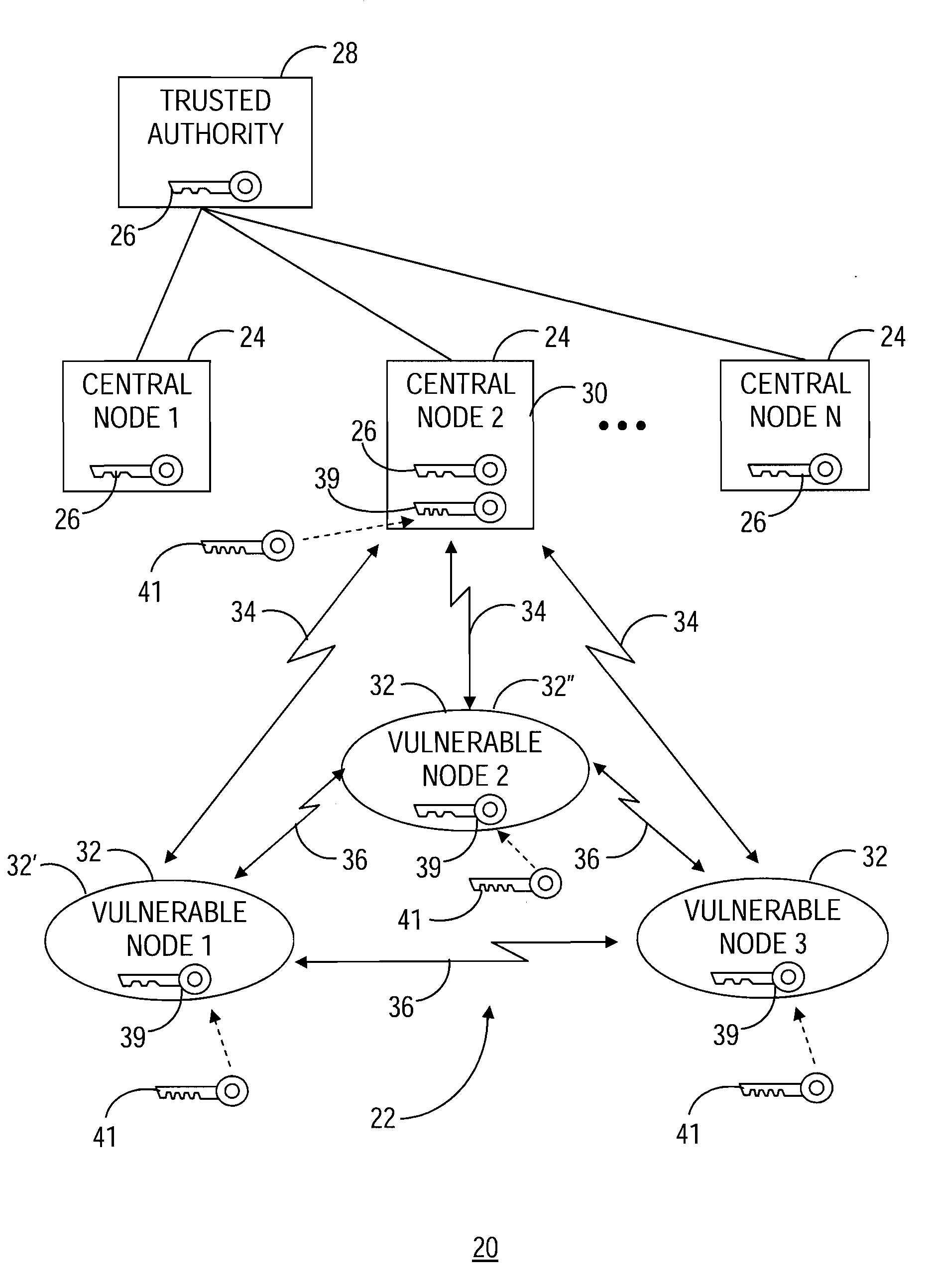Cryptographic key management in a communication network
a communication network and key management technology, applied in the field ofcryptography, can solve the problems of affecting the security of every device in the network, affecting the ability of the network to be compromised, and affecting the ability of the network to communicate securely, so as to facilitate the key management and quickly recover the effect of secure communication capability
- Summary
- Abstract
- Description
- Claims
- Application Information
AI Technical Summary
Benefits of technology
Problems solved by technology
Method used
Image
Examples
Embodiment Construction
[0023]The present invention involves a method and system of key management within a communication network. The present invention utilizes a combination of asymmetric session key establishment techniques and symmetric key management techniques that results in creation of a temporary key, referred to herein as a mission key. The mission key is subsequently utilized to secure communications within the communication network, and can be readily changed to recover secure communication capability in the event of a loss of a node within the network.
[0024]The present invention is described herein for use within a small tactical secure communication network, such as that which might be used in a field mission during military operations. However, the present invention is not limited to such a use. Rather, the present invention may be employed in a number of computing environments, sensor networks, communication networks utilized by a civilian population, and the like, where secure communicatio...
PUM
 Login to View More
Login to View More Abstract
Description
Claims
Application Information
 Login to View More
Login to View More - R&D
- Intellectual Property
- Life Sciences
- Materials
- Tech Scout
- Unparalleled Data Quality
- Higher Quality Content
- 60% Fewer Hallucinations
Browse by: Latest US Patents, China's latest patents, Technical Efficacy Thesaurus, Application Domain, Technology Topic, Popular Technical Reports.
© 2025 PatSnap. All rights reserved.Legal|Privacy policy|Modern Slavery Act Transparency Statement|Sitemap|About US| Contact US: help@patsnap.com



